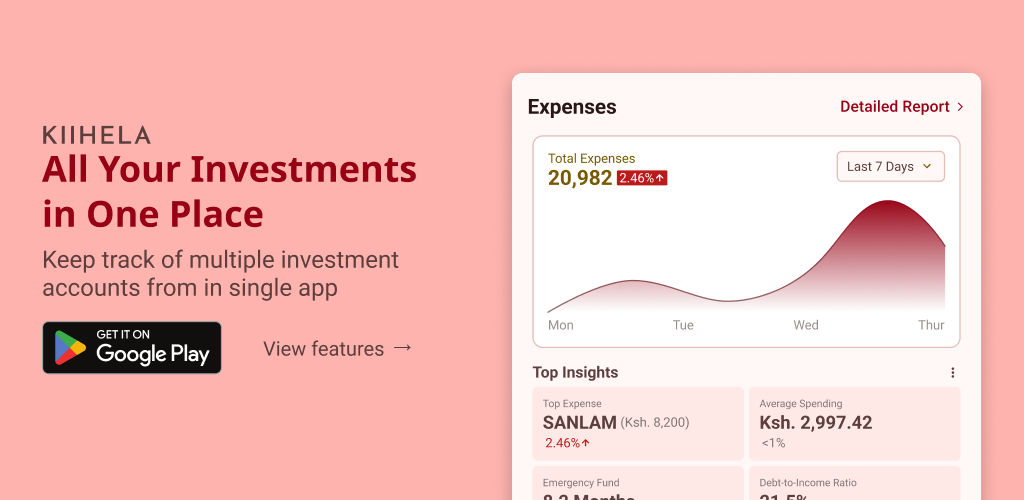Introduction
Kenya’s financial landscape is shifting fast. With more than 35 million smartphone users and near-universal access to M-Pesa, the country has become a testing ground for digital finance. What once required a banker, a broker, or a pile of paperwork can now be done on a screen in minutes. The rise of investment apps has turned everyday phones into investment tools—accessible, flexible, and far more powerful than most realize.
These apps have opened the door to a new kind of investor. Students can now start with as little as Ksh. 100, professionals can diversify into global assets, and diaspora Kenyans can invest back home without intermediaries. The result is a quiet but profound democratization of wealth-building: no insider contacts, no minimum deposits in the thousands, and no waiting in line at a bank.
But the choice has become messy. Dozens of new apps compete for attention, each promising higher returns, lower fees, or smarter automation. Some focus on safety and stability, others on high-risk trading, and most operate under different regulations—or none at all. Picking the right one can feel like guesswork.
This guide cuts through that noise. It’s written for anyone navigating Kenya’s growing investment ecosystem—whether you’re a beginner building your first savings cushion, a freelancer searching for higher yields, an educator mapping fintech trends, or a Kenyan abroad looking for trusted local options. You’ll find a clear comparison of the country’s best investment apps, what sets them apart, and how to match each one to your goals, risk appetite, and budget.
Before You Choose an App
Investment apps are not all built for the same kind of investor. Some prioritize safety and predictability, while others chase high-risk, high-reward opportunities. Before downloading anything or moving money, you need to understand the basic forces that determine what kind of return you’ll get—and what kind of loss you might face.
1. Risk vs. Reward
Every investment carries a trade-off. Low-risk assets protect your capital but grow slowly; high-risk ones can multiply your money or wipe it out. Kenyan apps now span this full spectrum:
- Low risk: Money Market Funds (MMFs) and savings-based platforms. These invest in government securities and fixed-income products. Typical annual returns range between 8–12%, paid daily or monthly.
- Medium risk: Balanced portfolios combining MMFs with local or international ETFs. Returns vary with market cycles, often 10–15% but less predictable.
- High risk: Apps that let you trade stocks, forex, or crypto. Profits can reach double digits in weeks—or vanish in a day.
2. Budget and Scale
Most apps let you start small—Ksh. 100, sometimes less—but your results scale with how much you put in.
A 10% return on Ksh. 100 gives you ten shillings; on Ksh. 10,000, it’s a thousand. The math doesn’t change, but
your outcomes do.
Small starts are fine for testing an app’s reliability and payout rhythm. Once you confirm consistency, increasing your investment gives compounding a chance to work in your favor. Reinvested earnings can accelerate growth over time.
3. Time Horizon
Your goal determines how long your money should stay invested.
- Short-term goals (saving for a purchase in six months): Choose stable, liquid options like MMFs or low-volatility funds.
- Long-term goals (wealth accumulation, retirement, business capital): Use diversified or equity-based apps where compounding has time to offset market swings.
4. Fees and Transparency
A 1% management fee might sound trivial until you realize it can consume a tenth of your annual gains. Some apps hide fees behind conversion costs or withdrawal penalties. Always check the total cost to invest, hold, and withdraw, not just the advertised rate of return.
5. Regulation and Safety
In Kenya, legitimate investment apps should be regulated by the Capital Markets Authority (CMA). Regulation doesn’t guarantee profits, but it does guarantee oversight—meaning your funds are handled under defined standards. Unregulated apps might promise more but leave you with no recourse if they collapse.
How to Choose the Right Investment App
Once you understand how investing works, the next step is matching your goals to the right platform. Kenya’s investment apps fall into distinct categories—some reward patience and minimal effort, while others require attention, strategy, and tolerance for volatility. The goal isn’t to find the “best” app overall, but the one that fits your situation.
Below is a framework for evaluating any investment app before committing your money.
1. Define Your Goal
Ask one clear question: What am I investing for?
Your answer determines every other decision.
- Short-term goals – Saving for a laptop, vacation, or emergency fund. Choose apps that prioritize stability and easy withdrawals.
- Long-term goals – Building wealth, buying property, or funding retirement. Pick platforms offering diversified or equity-based portfolios.
- Income generation – If you want frequent payouts, focus on apps with daily or monthly interest, not long lock-in periods.
When the goal is vague, your expectations drift—and so will your results.
2. Set a Realistic Budget
Start with what you can afford to lose, not what you hope to gain.
- Testing stage: Ksh. 100–500, just to understand how deposits and withdrawals work.
- Commitment stage: Ksh. 5,000–50,000, where returns begin to feel meaningful.
- Growth stage: Ksh. 100,000+, for diversified portfolios or multi-asset exposure.
Some apps offer tiered benefits: higher deposits unlock better returns or lower fees. Always confirm what thresholds trigger those differences before scaling up.
3. Know Your Risk Appetite
Every platform markets “returns,” but few talk about variability.
- Low-risk: Money market and savings apps. Predictable, but capped returns.
- Moderate-risk: Balanced funds or ETF-based platforms. Returns fluctuate but generally trend upward.
- High-risk: Active trading apps for stocks, crypto, or forex. Profitable only if you monitor and act regularly.
If you can’t check prices daily without anxiety, avoid the high-risk category.
4. Evaluate Ease of Use
A strong app doesn’t require a tutorial to navigate.
Look for:
- Clean deposit and withdrawal workflows (especially M-Pesa integration).
- Transparent performance dashboards showing returns clearly.
- Reliable customer support channels.
Complex interfaces and slow load times are early warnings that an app isn’t built for long-term trust.
5. Watch the Fees
Hidden fees erode profit silently. Focus on three types:
- Transaction fees: Charged per deposit or withdrawal.
- Management fees: Annual percentage deducted from your balance.
- FX or conversion fees: Common on apps that trade U.S. assets in USD.
Compare total costs, not just advertised rates. A 12% return with 2% fees is worse than an 8% return with none.
6. Verify Safety and Regulation
A CMA license is your baseline safeguard.
Regulated apps must publish audited statements, segregate client funds, and follow disclosure rules.
If an app refuses to list its regulator or parent company, that’s a red flag—no matter how impressive its numbers look.
7. Decide How Hands-On You Want to Be
Investment apps in Kenya can be grouped by engagement style:
| Style | Description | Examples | Best For |
|---|---|---|---|
| Passive | You deposit money once, and the app manages it automatically—usually in MMFs or bond funds. | Ziidi, Mali | Busy professionals, cautious savers |
| Active | You buy or trade assets directly—stocks, ETFs, or forex—deciding when to buy or sell. | Dosikaa, Hisa | Experienced investors, market enthusiasts |
| Hybrid | The app offers automated portfolios but allows manual adjustments. | Ndovu | Long-term investors seeking control with simplicity |
How Much Can You Really Make?
Investment apps promise to grow your money, but the results depend on three variables: risk, amount invested, and time. There’s no fixed formula, only trade-offs that shape your outcome.
It depends on:
1. Your Risk Level
Returns rise with risk—but so does the chance of losing capital.
| Risk Type | Typical Return (Annual) | Example Products | Reality Check |
|---|---|---|---|
| Low | 8–12% | Money Market Funds, savings apps | Reliable, predictable, but limited growth |
| Medium | 10–15% | Balanced portfolios, ETFs | Moderate swings; patience needed |
| High | 20%+ (variable) | Stocks, crypto, forex | Can double your money—or halve it |
If a platform promises high returns with “no risk,” it’s either misleading or unsustainable.
2. Your Investment Size
The math is simple: returns scale with capital.
A 10% annual gain on Ksh. 100 is a cup of tea; on Ksh. 100,000 it’s a month’s rent.
| Amount Invested | 10% Annual Return | What It Means |
|---|---|---|
| Ksh. 100 | Ksh. 10 | Useful for testing reliability |
| Ksh. 10,000 | Ksh. 1,000 | Noticeable growth |
| Ksh. 100,000 | Ksh. 10,000 | Real wealth-building potential |
Start small to test withdrawals and stability, then scale gradually.
3. Your Time Horizon
Compounding rewards consistency. Reinvesting returns monthly or annually accelerates growth.
Short-term investors chase liquidity; long-term investors exploit time.
| Duration | Effect |
|---|---|
| 3–6 months | Gains mainly from interest; little compounding |
| 1–3 years | Noticeable growth if profits are reinvested |
| 5+ years | Compounding dominates—returns multiply faster |
4. Other Variables
- Fees – Even 1–2% management charges eat into profit.
- Market cycles – Inflation, interest rates, and global trends affect performance.
- Discipline – Withdrawing early cancels compounding benefits.
In practice, Kenyan investors typically see 8–15% yearly returns from regulated, low- to medium-risk apps. Higher
figures exist, but they come with real volatility.
Your outcome depends less on the app itself and more on how long you stay invested, how much you commit, and how you
manage risk.
Best Investment Apps in Kenya
Kenya’s investment landscape is evolving fast, shaped by a generation that manages nearly everything through mobile phones—from payments and savings to full-scale portfolio management. Dozens of apps now compete for attention, promising effortless returns, smarter automation, or global market access.
But not all platforms are built alike. Some focus on passive investing, where your money grows quietly in the background, while others emphasize active investing, giving you control over what to buy, sell, or hold. Understanding this split is crucial: your ideal app depends on how involved you want to be and how much risk you’re willing to take.
The following breakdown highlights the leading investment apps available in Kenya today, grouped by investment style and evaluated for returns, usability, fees, and security. Each one serves a distinct kind of investor—from beginners experimenting with Ksh. 100 to professionals diversifying across global markets.
Passive Investment Apps
Passive investment apps let your money work in the background. Once you deposit, the platform allocates your funds—usually into regulated Money Market Funds (MMFs) or low-risk portfolios—and you earn steady interest without needing to trade or monitor markets. These options prioritize safety, liquidity, and consistency over aggressive growth, making them ideal for beginners, busy professionals, or anyone seeking predictable returns.
1. Ziidi
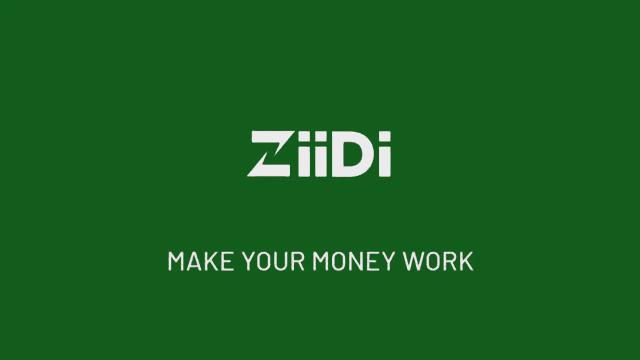
Overview
Introduced in 2025 by Safaricom, Ziidi is a regulated Money Market Fund (MMF) product seamlessly integrated
into M-Pesa. It’s built for simplicity: deposit, earn, and withdraw—all through your phone. Within its first few
months, Ziidi attracted over one million users and Ksh. 6 billion in investments, positioning it as Kenya’s
fastest-growing digital savings and investment platform.
How Ziidi Earns You Money
Ziidi grows your balance through a professionally managed Money Market Fund, which generates steady, low-risk
returns. Users currently earn an average net annual return of about 7%, credited daily to their account. The
earnings automatically compound, so each day’s interest adds to your balance and starts earning its own returns.
Example outcomes:
- Ksh. 1,000 earns roughly Ksh. 0.19 per day (~Ksh. 70 per year)
- Ksh. 10,000 earns about Ksh. 1.90 per day (~Ksh. 700 per year)
- Ksh. 100,000 earns around Ksh. 19 per day (~Ksh. 7,000 per year)
Withdrawals are instant and available anytime through M-Pesa, with no lock-in periods or penalties.
Key Features:
- Underlying vehicle: Regulated Money Market Fund (MMF)
- Minimum investment: Ksh. 100
- Average annual return: ~7% (net of fees)
- Withdrawals: Instant via M-Pesa
- Regulation: Licensed and supervised by the Capital Markets Authority (CMA)
- Management partner: Standard Investment Bank (SIB)
Pros:
- Instant deposits and withdrawals through M-Pesa
- Daily compounding interest, automatically reinvested
- CMA-regulated and institutionally backed
- Simple, low-friction experience ideal for new investors
Cons:
- Moderate returns compared to higher-risk options like stocks or ETFs
- Limited to one product type (MMF only)
- Minimal portfolio transparency
Best For:
- Beginners who want a low-risk, easy entry into investing
- Professionals seeking to earn interest on idle M-Pesa balances
- Risk-averse savers prioritizing liquidity and safety over high returns
In short, Ziidi is a mobile-first, low-risk investment tool that helps you earn steady daily returns from a regulated fund—no trading, no complexity, and no waiting period to access your money.
2. Zimele
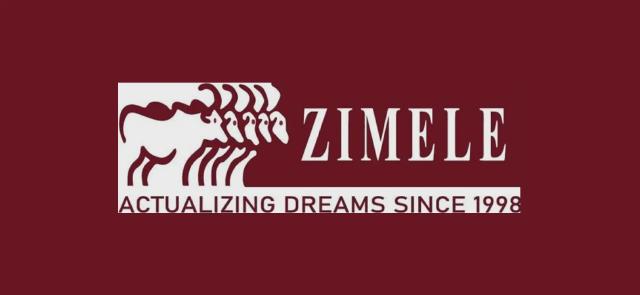
Overview:
Zimele Asset Management is one of Kenya’s most established investment firms, known for its reliability and
regulatory track record. Its Zimele Savings and Investment Plan offers access to a regulated Money Market Fund (
MMF) through both a web platform and a mobile app.
What makes Zimele stand out is its strong group-investment capability—it’s one of the few platforms in Kenya built
with formal support for chamas, saccos, and collective savings groups.
How Zimele Earns You Money:
Zimele’s MMF provides steady, low-risk growth by generating 9–10% annual returns (net of fees). Returns are credited
daily, compounded automatically, and available for withdrawal within one business day. Like other MMFs, it
prioritizes stability and liquidity rather than aggressive growth.
Example returns:
- Ksh. 1,000 → earns about Ksh. 90–100 per year
- Ksh. 10,000 → earns about Ksh. 900–1,000 per year
Key Features:
- Underlying vehicle: Regulated Money Market Fund (MMF)
- Minimum investment: Ksh. 100
- Average annual return: 9–10% (net of fees)
- Withdrawals: Within one business day
- Regulation: Licensed by the Capital Markets Authority (CMA)
- Access: Web platform, mobile app, and USSD (#501#)
- Group functionality: Dedicated Chama Manager with multi-user roles and approvals
Group & Chama Functionality Highlights:
Zimele’s Chama Manager app makes it uniquely powerful for collective investment groups.
- Supports merry-go-rounds, savings rotations, and pooled contributions.
- Allows assignment of group roles (Chairperson, Treasurer, Secretary, Members).
- Withdrawals require multi-member approval, reducing misuse risk.
- Provides automated reports, downloadable statements, and CSV exports for record-keeping.
- Offers both web access and mobile app control, allowing flexibility for distributed groups.
This structure makes it ideal for community-based savings and small organizations that need transparency and accountability.
Pros:
- Excellent support for group investments and chamas
- Robust reporting, exports, and oversight tools
- Low entry point and daily compounding returns
- Reliable, CMA-regulated institution with a long operating history
Cons:
- Less modern interface compared to newer fintech apps
- App features lag behind the web platform (some tools web-only)
- No exposure to high-growth assets like equities or ETFs
Best For:
- Chamas and group investors seeking structure, transparency, and accountability
- Conservative savers who value regulatory safety and consistent income
- Users who prefer detailed reporting and fund visibility
Zimele remains the go-to choice for organized groups and cautious individual savers.
While its UI may feel dated, its group management tools, strong oversight features, and dependable returns make it one
of the most functional and trustworthy MMF options in Kenya.
3. Cashlet

Overview:
Cashlet is a sleek, mobile-first savings and investment app built for Kenya’s modern investor—especially younger
users and freelancers who want to save, invest, and track progress all in one place. The app partners with multiple
licensed fund managers, including ICEA Lion and others, to give users access to different Money Market Funds (
MMFs), allowing them to choose or diversify based on performance and preference.
How Cashlet Earns You Money:
Your deposits are invested in one or more partner MMFs that generate steady, low-risk returns, typically between *
*9–11% per year (net of fees)**. Returns accrue daily, compound automatically, and can be withdrawn within 1–2
business days.
Cashlet also introduces lockable savings goals, where you can legally commit funds for a set duration—unlike pseudo-lock accounts such as M-Shwari that can be reversed within days. Once locked, funds cannot be accessed until the agreed maturity date, ensuring real discipline for medium-term savings goals like tuition, projects, or business capital.
Example outcomes:
- Ksh. 1,000 → earns about Ksh. 90–110 per year
- Ksh. 10,000 → earns about Ksh. 900–1,100 per year
Key Features:
- Underlying vehicle: Regulated Money Market Funds (MMFs)
- Minimum investment: Ksh. 500
- Average annual return: 9–11% (net of fees)
- Withdrawals: 1–2 business days (instant for unlocked goals)
- Lockable goals: Legally binding lock periods for disciplined saving
- Regulation: Partner funds licensed by the Capital Markets Authority (CMA)
- Access: iOS and Android apps
Pros:
- Multiple MMFs: Users can diversify across several regulated funds
- True locked goals: Fixed-period investments that can’t be broken prematurely
- Modern, intuitive interface: Clean design with real-time tracking and goal visualization
- Automated saving: Schedule recurring deposits directly from M-Pesa
- Clear progress tracking: View growth per goal and overall portfolio at a glance
Cons:
- Withdrawals are not instant (1–2 business days)
- No exposure to higher-growth assets like stocks or ETFs
- Requires smartphone access—no web or USSD option yet
Best For:
- Young professionals who want structure, automation, and transparency in saving
- Freelancers managing irregular income through defined goals
- Users who want to enforce genuine savings discipline with locked investments
Cashlet blends modern fintech design with disciplined money management. Its combination of multiple MMFs, legally binding lock options, and a refined user experience makes it one of the most forward-thinking passive investment platforms in Kenya today.
4. Ndovu (Passive Investing)

Overview
Ndovu is a hybrid investment platform that gives Kenyans access to both local and international markets—but it also
caters strongly to passive investors who want reliable, low-risk growth without the need to monitor daily market
movements. Through its automated portfolio builder, Ndovu helps users set clear goals and invests their funds in
diversified, regulated products that match their risk appetite and timeline.
How Ndovu Earns You Money
For passive investors, Ndovu’s default allocation focuses on Money Market Funds (MMFs), government bonds, and *
fixed-income instruments*. These generate steady, compounding returns averaging 10–13% annually (net of fees),
depending on market conditions. Returns accrue automatically, are visible in real time on the dashboard, and can be
withdrawn within 2–3 business days.
You can start investing with as little as Ksh. 500 (or $5), and the platform offers both Ksh and USD portfolios—an advantage for diaspora Kenyans or users with international income streams.
Example outcomes:
- Ksh. 1,000 → earns about Ksh. 100–130 per year
- Ksh. 10,000 → earns about Ksh. 1,000–1,300 per year
Key Features
- Underlying vehicle: Regulated MMFs and bond portfolios (for passive investors)
- Minimum investment: Ksh. 500 (or $5)
- Average annual return: 10–13% (net of fees)
- Withdrawals: 2–3 business days via M-Pesa or bank transfer
- Regulation: Licensed and supervised by the Capital Markets Authority (CMA)
- Access: Mobile app and web dashboard
Pros
- Diversified exposure: Combines MMFs, bonds, and ETFs for risk-adjusted stability
- Automated portfolio building: Aligns with user goals and timelines
- Dual-currency support: Offers both Ksh and USD investment options
- CMA-regulated and transparent: Provides fund details, performance reports, and audited statements
- Clean, modern interface that’s easy to navigate even for first-time investors
Cons
- Withdrawals are slower compared to M-Pesa-linked MMFs (e.g., Ziidi)
- Currency conversion fees may apply to USD-based investments
- Slightly higher minimum investment than most savings apps
Best For
- Long-term savers who prefer low-risk, set-and-forget portfolios
- Diaspora Kenyans investing locally in Ksh or USD
- Investors who want passive growth now, with the option to scale into more active products later
Ndovu stands out for bridging simplicity and sophistication—it delivers the safety of MMFs with the structure of a professionally managed portfolio, making it an excellent choice for users who want passive growth with clear visibility and regulatory assurance.
Active Investment Apps
Active investment apps cater to users who want more control, higher potential returns, and direct market access. Instead of parking money in managed funds, these platforms let you buy and sell assets—stocks, ETFs, or even cryptocurrencies—based on your own strategy or timing.
These apps demand more engagement and tolerance for volatility. They’re best suited for users who want to make informed decisions, track performance actively, and are comfortable with short-term fluctuations in pursuit of higher gains.
The following are Kenya’s leading active investment platforms, each offering different levels of sophistication and accessibility.
1. Hisa
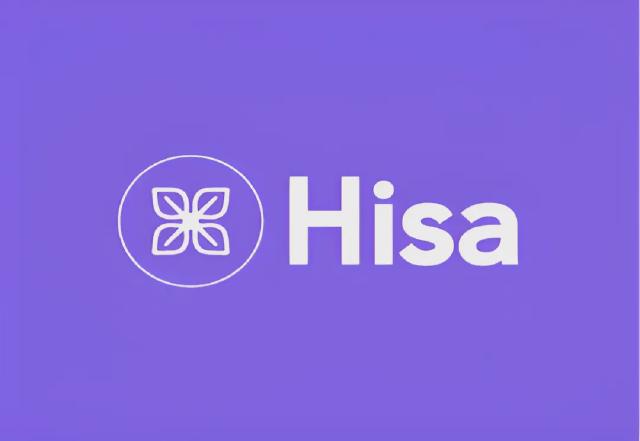
Overview
Hisa is one of Kenya’s most prominent active investing platforms, designed to give retail investors direct
access to both local (NSE) and global (US) markets. It’s built around the idea of fractional investing—you can
buy a small slice of a share rather than an entire one—making stock ownership accessible to anyone with as little as *
Ksh. 100*.
Hisa also integrates a social layer: community discussions, investor insights, and learning materials within the app. This makes it not just a trading platform, but an ecosystem for beginner and intermediate investors to learn, share ideas, and grow.
How Hisa Earns You Money
Unlike a money market fund, Hisa doesn’t generate fixed returns. You earn based on capital gains (when stock prices
rise) and dividends from the companies you invest in. For instance, buying Ksh. 1,000 worth of Safaricom stock and
selling it later at a 15% higher price nets a Ksh. 150 profit. If that stock also pays dividends, you earn those as
additional income.
Returns therefore depend on:
- The performance of your chosen stocks
- Timing of buying/selling
- Broader market conditions
Key Features
- Assets available: NSE-listed and U.S. stocks (fractional shares supported)
- Minimum investment: Ksh. 100
- Returns: Variable (market-dependent)
- Withdrawals: Usually within 2–3 business days
- Regulation: Licensed under the Capital Markets Authority (CMA)
- Access: Mobile app (Android & iOS) and web dashboard
Pros
- Fractional investing: Start with small amounts
- Access to U.S. markets: Diversify beyond Kenya’s NSE
- Community & education: Built-in forums and learning tools
- CMA-regulated: Adds trust and compliance transparency
- Modern design: Clean, interactive interface
Cons
- Requires active involvement—returns aren’t guaranteed
- Stock volatility can lead to losses
- Learning curve for users unfamiliar with equity markets
Best For
- Young investors learning the stock market
- Active traders who want control over what they buy and sell
- Freelancers and professionals diversifying into long-term equities
Hisa is Kenya’s bridge between casual savers and market investors—accessible enough for beginners, yet powerful enough for users who want to participate directly in both local and global markets.
2. Dosikaa

Overview:
Dosikaa is a next-generation stock trading app developed in partnership between the Nairobi Securities
Exchange (NSE) and the Capital Markets Authority (CMA). It was built to simplify direct stock trading for retail
investors, eliminating the need for traditional brokers while maintaining regulatory oversight and transparency.
Dosikaa represents a major shift in Kenya’s capital markets: it puts live market data, stock trading, and portfolio tracking directly in the hands of everyday investors through a mobile-first platform.
How Dosikaa Earns You Money:
Dosikaa enables users to earn from capital appreciation and dividends on NSE-listed companies. You buy shares
directly on the exchange, hold them as their value rises, and optionally sell for profit. The platform provides live
price feeds, charts, and performance summaries so you can monitor your holdings in real time.
Because trades execute directly on the NSE, your returns depend entirely on market performance and timing—not fixed yields. Some companies also issue periodic dividend payouts, which appear automatically in your account balance when declared.
Example:
- Buying Ksh. 5,000 of Safaricom shares at Ksh. 20 per share gives you 250 shares.
- If the price rises to Ksh. 25, your position is now worth Ksh. 6,250, a 25% gain—plus any dividends declared during that period.
Key Features:
- Assets available: All NSE-listed stocks
- Minimum investment: Around Ksh. 1,000 (based on typical trade sizes)
- Returns: Market-dependent (capital gains + dividends)
- Fees: Zero broker commission on select trades; low transaction costs overall
- Regulation: Fully licensed by the CMA and backed by the NSE
- Access: Mobile app (Android and iOS) with real-time market data
Pros:
- Direct access to the NSE—no intermediaries or manual broker setup
- Real-time market data and trading tools
- Low or no commission on certain trades
- CMA and NSE backing guarantees regulatory safety
- Portfolio tracking and performance insights built into the app
Cons:
- Limited to NSE stocks only—no bonds or foreign assets
- Occasional app lag reported during high-volume trading hours
- Lacks advanced analytics tools favored by professional traders
Best For:
- Beginners exploring Kenya’s stock market for the first time
- Retail investors seeking direct control of NSE-listed shares
- Professionals wanting low-cost, transparent equity trading
Dosikaa represents Kenya’s push toward full retail participation in the stock market—combining accessibility, regulation, and transparency in one platform. It’s the most straightforward route for anyone looking to invest directly in listed Kenyan companies.
3. Ndovu (Active Investing)

Overview:
While Ndovu offers hands-off portfolios for passive investors, it also includes a more active investing tier for
users ready to take control of asset allocation. Through its platform, investors can access both Kenyan and global
markets, including U.S. stocks, ETFs, and bonds. This makes Ndovu one of the few Kenyan fintech apps that provide
retail investors with cross-border exposure through a CMA-regulated structure.
How Ndovu Earns You Money:
Active Ndovu users select or customize their portfolio mix instead of relying on automatic allocation. You can invest
in:
- Global ETFs (e.g., S&P 500, Nasdaq 100)
- U.S. company stocks (e.g., Apple, Tesla)
- Local bonds or fixed-income assets
Returns depend on the performance of the selected assets—profits from capital appreciation, dividends, and * bond yields*. By blending international exposure with local assets, users can hedge against Kenyan inflation and currency depreciation while benefiting from stronger global markets.
Example:
- Ksh. 10,000 invested in a global ETF tracking the S&P 500 could gain 12–15% annually in strong years.
- Local bond allocations may yield 10–12%, offering a stabilizing layer.
- The app lets you rebalance periodically or switch between asset classes as your goals evolve.
Key Features:
- Assets available: Global ETFs, U.S. stocks, local bonds
- Minimum investment: Ksh. 500 (or $5)
- Returns: Market-dependent (variable by asset type)
- Withdrawals: 2–3 business days
- Regulation: Licensed by the Capital Markets Authority (CMA)
- Access: Mobile app and web dashboard
Pros:
- Global diversification: Access to both Kenyan and international markets
- Flexible control: Adjust or rebalance your own portfolio
- Transparent performance reporting with real-time data
- CMA-regulated: Oversight ensures compliance and fund protection
- USD and KES accounts: Ideal for local and diaspora investors
Cons:
- Transaction and FX conversion fees for USD-based trades
- Requires more financial knowledge than passive use
- Withdrawals slower than local MMF apps (2–3 days)
Best For:
- Experienced investors wanting control over portfolio composition
- Diaspora Kenyans diversifying internationally
- Users seeking global exposure within a trusted, local regulatory framework
Ndovu’s active tier merges accessibility with global reach—it’s the logical next step for investors graduating from passive savings apps to hands-on wealth building. It offers flexibility, diversification, and international opportunity, all under CMA supervision.
4. FXPesa
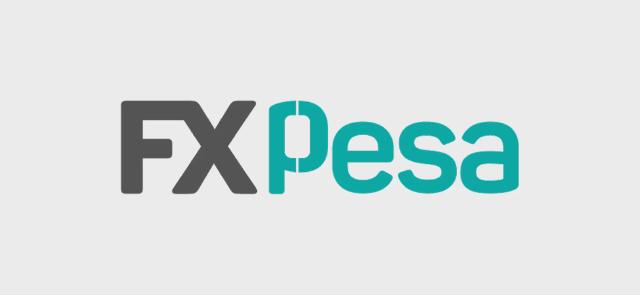
Overview:
FXPesa, operated by EGM Securities, is Kenya’s leading multi-asset trading platform that gives users access
to forex, commodities, indices, and global stocks. It’s built for active traders who want real-time control,
professional-level charting tools, and exposure beyond Kenya’s domestic markets. FXPesa is fully licensed by the *
*Capital Markets Authority (CMA)**, making it one of the few compliant forex brokers in East Africa.
How FXPesa Earns You Money:
FXPesa enables users to profit from price movements in global markets. You can trade:
- Currency pairs (e.g., USD/KES, EUR/USD)
- Global stocks and indices (e.g., Apple, Tesla, S&P 500)
- Commodities (e.g., gold, oil)
You earn by buying low and selling high or through short-selling when prices fall. Leverage—borrowing capital to magnify trades—allows higher potential gains, but it also increases risk. For example:
- A 1% move in a leveraged forex position can produce a 10–50% gain or loss, depending on the multiplier you use.
FXPesa also provides demo accounts for practicing without real money, making it easier for beginners to understand market dynamics before trading live.
Key Features:
- Assets available: Forex, global stocks, commodities, indices
- Minimum deposit: Around Ksh. 1,000
- Returns: Market-dependent (high potential, high volatility)
- Withdrawals: 1 business day via M-Pesa or bank transfer
- Regulation: Licensed by the CMA
- Access: Mobile app, web platform, and MetaTrader (MT4/MT5) integration
Pros:
- Global access: Trade international markets directly from Kenya
- Professional tools: Real-time charts, indicators, and automated trading support
- Demo mode: Practice without risking money
- Regulated and trusted: Operates under CMA oversight
- M-Pesa integration: Simple deposits and withdrawals
Cons:
- High risk: Leverage magnifies both profits and losses
- Requires financial and market knowledge to avoid major losses
- Active monitoring needed: Not suitable for passive investors
Best For:
- Experienced traders seeking high-risk, high-reward opportunities
- Professionals diversifying into forex or global equities
- Beginners wanting to learn trading safely through demo accounts
FXPesa is Kenya’s entry point to the global trading ecosystem—ideal for those ready to move beyond local investments and engage directly with international markets, but unsuitable for anyone who cannot manage volatility or constant market tracking.
Comparison of the Best Investment Apps in Kenya
The apps covered above span Kenya’s entire investment landscape—from low-risk, automated savings tools to high-risk, active trading platforms. To help you decide which one fits your financial goals, here’s a concise comparison across key factors: minimum investment, expected returns, usability, fees, asset range, and **regulatory safety **.
| App Name | Category | Minimum Investment | Expected Annual Return | Usability | Withdrawal Speed | Asset Type Best For |
|---|---|---|---|---|---|---|
| Ziidi | Passive | Ksh. 100 | ~7% (net) | Very High | Instant | MMF Cautious investors |
| Zimele | Passive | Ksh. 100 | 9–10% | Medium | 1 day | MMF Groups, chamas, low-risk savers |
| Cashlet | Passive | Ksh. 500 | 9–11% | High | 1–2 days | Multiple MMFs Goal-based savers, freelancers |
| Ndovu (Passive) | Passive | Ksh. 500 | 10–13% | High | 2–3 days | MMF + Bonds Long-term or diaspora investors |
| Hisa | Active | Ksh. 100 | Variable | High | 2–3 days | Stocks (NSE + US) Retail stock investors |
| Dosikaa | Active | ~Ksh. 1,000 | Variable | Medium | 2–3 days | NSE Stocks Beginners in direct stock trading |
| Ndovu (Active) | Active | Ksh. 500 | Variable (10–15% typical) | High | 2–3 days | Global ETFs + Bonds Experienced or global investors |
| Chumz | Hybrid | Ksh. 50 | 9–11% | High | 1–2 days | MMF Habit-based savers, young users |
| FXPesa | Active | Ksh. 1,000 | Market-dependent (high risk) | Medium | 1 day | Forex, Stocks, Commodities Experienced traders |
Observations
- Liquidity vs. Return: Ziidi and Zimele offer near-instant or next-day access but moderate returns; Ndovu and Cashlet provide slightly higher yields at the cost of slower withdrawal times.
- Diversification: Ndovu and Hisa stand out for global and stock-based exposure; others remain focused on MMFs.
- Accessibility: M-Pesa-linked apps (Ziidi, Chumz) dominate convenience, while Cashlet and Ndovu lead in design and analytics.
- Group Investing: Zimele remains unmatched for chamas and structured group savings.
- Risk Profile: FXPesa is the only platform built for high-risk traders; all others target stability or balanced growth.
Each platform fits a distinct profile. Your ideal app depends on what you value most—instant liquidity, steady income, diversification, or active control.
Conclusion
Kenya’s investment ecosystem has matured rapidly—from a handful of unit trusts and savings products a decade ago to a thriving mobile-first marketplace where anyone with a smartphone can build wealth. These apps represent not just convenience, but a fundamental shift in financial access and literacy.
Whether you’re a student testing the waters with Ksh. 100, a professional looking to diversify beyond savings accounts, or a diaspora Kenyan investing from abroad, there’s now a platform tailored to your needs.
- For safety and ease: Ziidi and Zimele remain the simplest paths to steady, regulated returns.
- For flexibility and design: Cashlet modernizes saving through goal tracking and real lockable plans.
- For higher yields and long-term structure: Ndovu offers diversified, CMA-regulated portfolios that scale from passive to global investing.
- For active engagement: Hisa and Dosikaa bring the stock market to your phone, enabling you to trade directly.
- For disciplined savers: Chumz turns saving into a habit with behavioral triggers.
- For risk-tolerant traders: FXPesa opens the door to global markets—high risk, but high potential reward.
Ultimately, there’s no single “best” investment app in Kenya—only the one that fits your goals, timeline, and appetite for risk. Start where you are, invest what you can afford to lose, and scale thoughtfully.
The power to grow your money no longer sits in boardrooms or broker offices—it’s already in your pocket.


